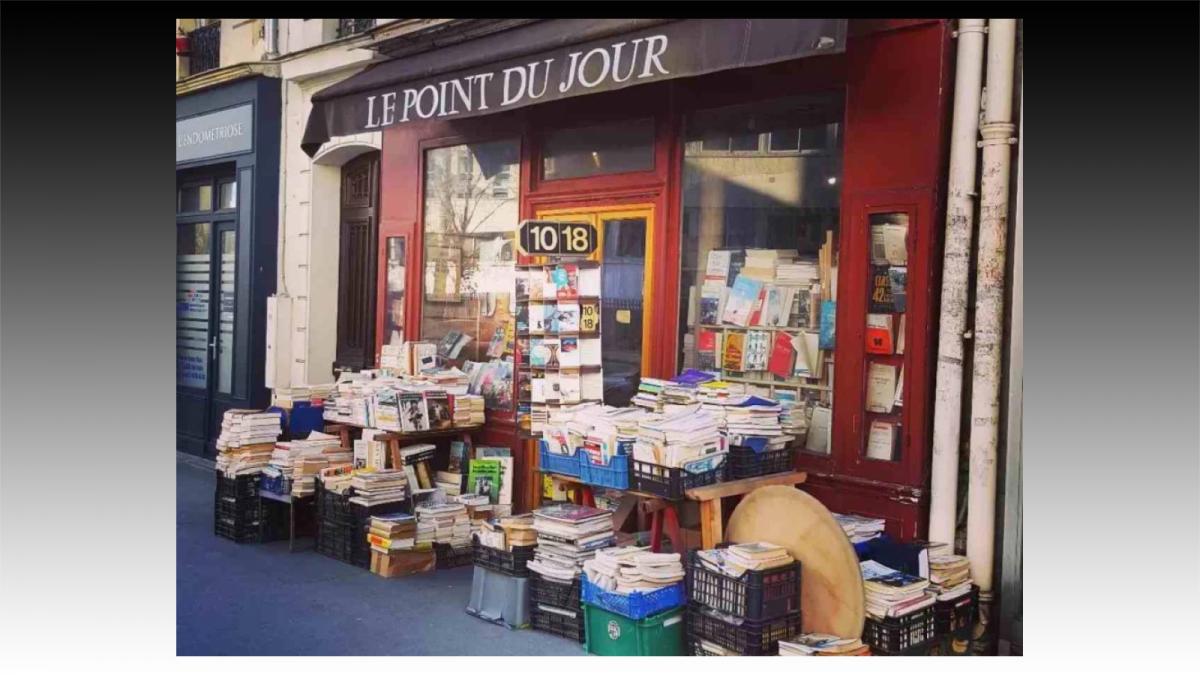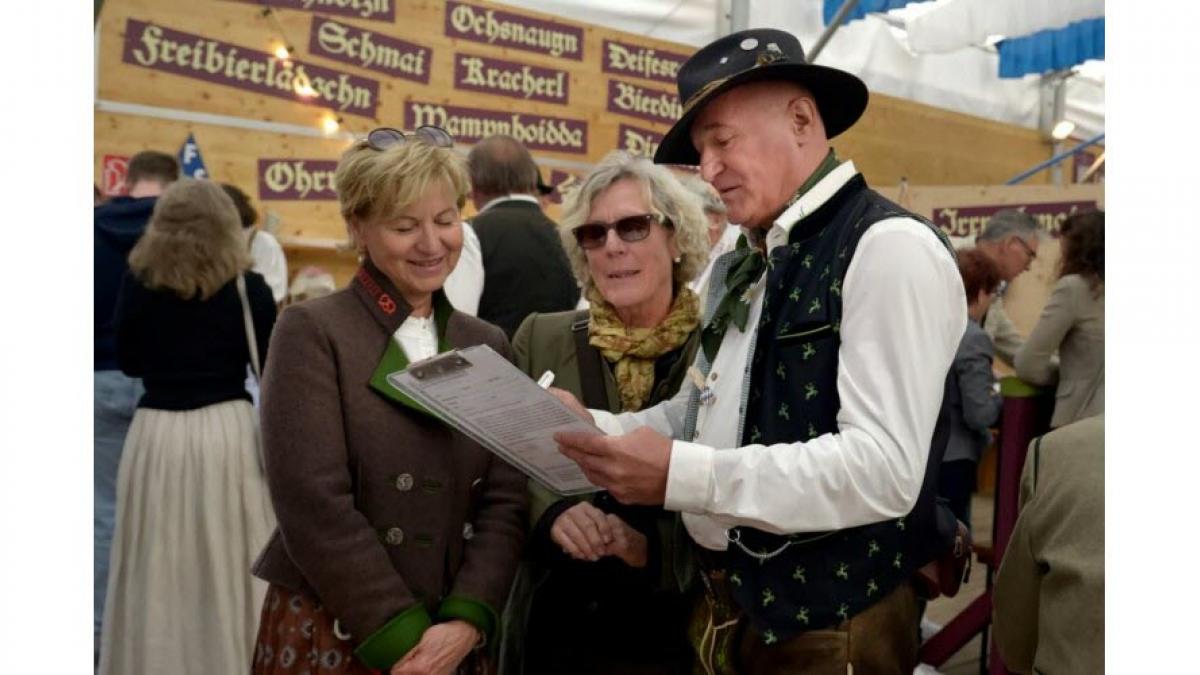Creole Bengal, or, What Are We? A Personal Journey through Words and Worlds
by Ananya Jahanara Kabir
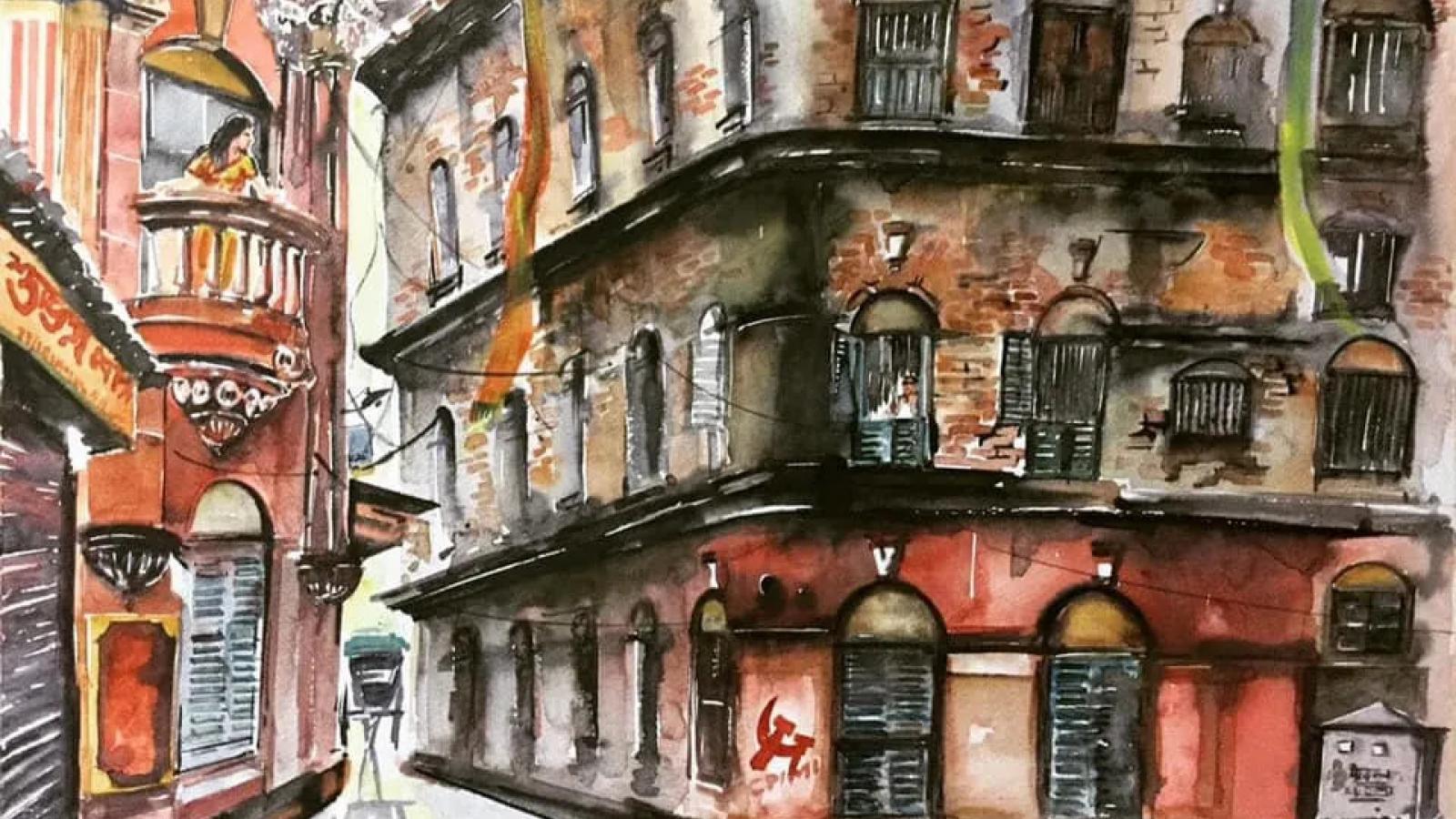
(The text is an adaptation of my Infosys Lecture, delivered at Victoria Memorial Hall, Kolkata, in January 2019, in acknowledgment of the 2017 Infosys Prize for the Humanities, which I was awarded in 2018 by the Infosys Science Foundation, India)
Kolkata’s streets teach us many lessons. During my school and college years I used to walk the length and breadth of a certain slice of the city: from Park Circus, my most intimate neighbourhood, to College Street, via an intersecting web of Park Street, Lower and Upper Circular Roads, Free School Street, Wellington, Wellesley, Chowringhee, Dalhousie, Dharamtalla, Bowbazar, Central Avenue… The education I received at the city’s institutions went beyond the words that I learnt to analyse, immersing me in many nestled worlds. My school friends had been drawn from the Bengali Muslim, Bengali Christian, Goan-Mangalorean, Anglo-Indian inhabitants of Park Circus, and, later, from the half-hidden worlds of Bohra, Chinese, Armenian, Jewish, and assorted non-Bengali Muslim communities. Protected by our convent school uniforms, we ate each other’s foods and absorbed each other’s lifeways. The move to Presidency College on College Street and the life of adda and flânerie it inaugurated showed me how the worlds of North Calcutta connected back to Central Calcutta and the Park Circus of my childhood. Cemeteries, kebab shops, tramlines, and bus routes — especially the S24 that took us from our South Calcutta homes to College and back — taught me quotidian lessons about urban history.
Remembering cosmopolitan worlds
This daily traffic between words and worlds — when the worlds in question were the neighbourhoods of College Street, Park Street, and Park Circus, was the magnet drawing me to the study of the colonial past precisely in order to solve certain puzzles and outstanding questions regarding the postcolonial present. I became aware of that past’s continuing impress upon the present through both tangible and intangible reminders and remainders. My quest for memory and identity took me back — through a chain of cultural recognitions — to the colonial period as a way to understand the postcolonial modern.
In 2003, when I started visiting Srinagar to investigate how poets and artists were responding to the ongoing Kashmir conflict, I was repeatedly told to consult colonial gazetteers and writers. Walter Lawrence and Francis Younghusband were household names; cheap editions of their works circulated in Srinagar’s bazaars and were far easier to buy there than in Delhi. In the Mahatta family’s photographic studio on the Srinagar Bund, one could purchase postcards that reproduced images that themselves reproduced the landscapes captured by the earliest colonial photographers such as John Burke and William Baker. Most crucially, I cannot forget how the elderly owner of the houseboat I subsequently always stayed at came rushing out to thank me for ordering for breakfast ‘a poached egg’. In the years of conflict that drew to his houseboat only the tail end of pilgrims to Vaishno Devi, breakfast orders definitely did not include egg of any kind. The tangible and the intangible came together when I was gradually made privy to a cache of documents held by most houseboat owners, tattered testimonies from colonial visitors which included telegrams from Rawalpindi announcing their returns; attestations of superb soufflé and cake making capacities, and so on. I discovered amongst one such stash a testimony by the great scholar Aurel Stein himself.
The exposure to those half-hidden Kashmiri memories taught me to understand how the colonial past connected to the present. The reason why the houseboat owners have kept these scraps of paper for generations were also the reason for the disproportionate joy at my request for a ‘poached egg’. They are triggers for the memory of when houseboats were the sites of parties and picnics and scholarly expeditions; where these comings and goings, together with western style non-vegetarian breakfasts, were the sign of cosmopolitanism, however tainted that might look from nativist perspectives today.
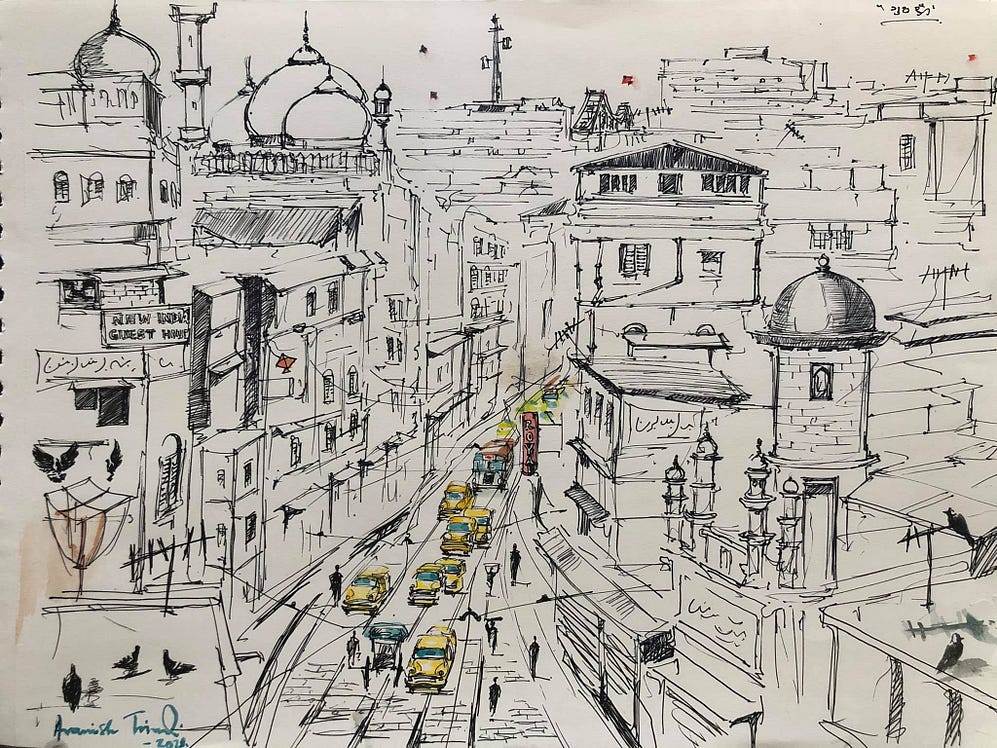
This cosmopolitanism made me begin my subsequent book — on post-Partition South Asia — with an invocation of Dean Martin, the memory of whose songs connected cousins partitioned across India, Pakistan and Bangladesh in 1947 and 1971. The sonic, olfactory, and culinary traces of Anglo-India in Park Circus, Calcutta, where my family lived before and after 1947, pointed me to another way to think about the colonial encounter and the dynamic creation of identities through the interstices of binaries. In the place where Armenians, Anglo-Indo-Portuguese, Muslims of various kinds, Baghdadi Jews, and decommissioned lascars met and mingled, shared cuisines, clothes, commodities, and in many cases, emotional and physical intimacies — in such spaces lay the stories I sensed were mine, and which I have wanted to bring to light.
From cosmopolitan to creole
My recent research has revealed fresh horizons for the cosmopolitanism I want to excavate for postcolonial South Asia as a philological, philosophical, and political project. These horizons — formed yet again through the intersection of words and worlds — have led me to define that cosmopolitanism as ‘creole’ and the project itself as ‘a search for Creole Indias.’ In a recent short but suggestive essay, ‘Lord Cornwallis and the early demise of Creole India’, the historian Claude Markovits identifies Lord Cornwallis’s Governor-Generalship (1786–1793) as the period during which Britishness was defined in a way that impacted definitively the political history of British India. This definition of Britishness pivoted on what Markovits terms the Cornwallisian closure: Cornwallis nipping in the bud a Creole identity that had developed by late 18th century India.
Markovits explains that he uses ‘Creole’ here to describe people of white or mixed-race ancestry who, whether or not they were born in India, identified somehow with it. Following on from the scandals of dissolute living around Warren Hastings, Cornwallis was all for restoring a stiff upper lip variety of Britishness. Here he built on the Regulatory Act (1773), that drew a line between British subjects and ‘natives of India’ while leaving unclear the position of those who had full or partial British ancestry, but were India-born. Cornwallis exploited this lack of clarity. By 1773, most mixed-race people in India, known then as ‘East Indians’, were Catholics and Portuguese subjects, having Portuguese ancestry on their paternal side. This group was being augmented through an influx of British soldiers into both the King’s Army and the Company’s Army. Their liaisons with local women had resulted in a rapidly-growing group of Eurasian youth — fathered by these British soldiers, but whose mothers included both Indian and Indo-Portuguese women. Enter Cornwallis, who, on surveying this scene, considered unfit for employment in India anyone without clear proof that both their parents were European-born or descended from pure European blood untainted by native admixture. This stance, and the attendant definition of Britishness in newly articulated racialized terms, closed off the possibilities of Creole India by rendering invisible a certain group: those who could occupy an in-between space between ‘Indian’ and ‘British’.
Markovits’s argument depends on the etymology of ‘creole’, from Latin creare, ‘to create’, ‘to beget’. This term and its various cognates were used from the 15th century onwards to describe the newness emerging out of the population movements caused by European expansionism, slavery, and colonialism. The etymological connection with procreation has kept ‘creole’ tied to the biological results of European and non-European encounters resulting from these historical processes, and this is the primary sense in which Markovits deploys it to identify the Cornwallisian closure. But his emphasis on ancestry, which draws sustenance from Cornwallis’s own emphasis on birth and blood, is accompanied by a qualifier: ‘whether or not they were born there’. This sense of ‘creole’ as an adoptive, affiliative identity allows Markovits to set Cornwallis’s decision in India against a broader, transcolonial political horizon of the 18th century. Cornwallis could render invisible this proto-Creole community by snatching away the possibilities of power from it — most probably, argues Markovits, because of his experience in America’s War of Independence, where he saw with horror such a Creole — native-born — group of British settlers revolt against the King. Here, ‘creole’ signals a radical possibility rather than a mere accident of birth.
A similar move is made by Partha Chatterjee in The Black Hole of Empire. On the model of the Creole revolutions in the British and Spanish empires in the Americas, he discusses the possibility of a Creole modernity in Calcutta in connection with the emergence of republican nationalism in 19th century India. Chatterjee continues to use ‘creole’ in the sense of European-descendant settlers of the New World whose newness included affiliations and projects radically divergent from those of their European counterparts. His phrasing implies the blooming of such Creole political aspirations during the so-called Bengal Renaissance, particularly when he identifies Rammohun Roy’s imagined India, where Europeans and Indians shared political equality as citizen-subjects, as Roy’s vision of a ‘Creole republic’. In describing the hopeful political projects of Rammohun Roy and Henry Derozio as ‘Creole imaginings’, Chatterjee both converges and diverges from Markovits’s focus on these same luminaries of Bengal. Unlike Chatterjee, Markovits turns to Roy and Derozio to chart the afterlife of an early possibility that Cornwallis closed off by hardening identities in British India to one of two politically effective categories: British, and Indian. This binary frame still constricts colonial historiography of India, according to Markovits. Arguably it is the very reason that he finds Creole not a term in common use in India.
This nuance aside, what both historians share is the largely political and administrative remit they assign to ‘Creole India’. Neither focuses on creole cultural worlds or indeed the routes towards the formation of a creoleness that persisted beyond the 18th century to inspire a Rammohun Roy or a Henry Derozio. Chatterjee does trace the seeds of his creole modernity to the private educational institutions of Calcutta such as the Durromtollah Academy, where De Silvas, Da Costas, Pintos and Pereiras studied alongside Derozio (who was, of course, actually descended from the Portuguese De Rozarios) — but he does not develop its implications for creole modernity as creole sociability. What are the deeper structures that brought together in an urban space such as 19th century Dharamtala, this Portuguese-sounding rollcall of pupils together with someone whose family had changed their originally Portuguese surname to a more British-sounding one? Neither does the brevity of Markovits’s essay allow him to expound on the cultural contours of the Creole India which ended with the regime of Cornwallis — although he does point to the different route taken by Portuguese India, where by mid-19th century had emerged what he describes as black Creole Portuguese with specific political affiliations. Their cultural affiliations, however, remain unexplored.
The starting point of my search for Creole Indias is this domain of culture, affect, exchange and memory, that awaits our scholarly touch. To enter it, I turn to the use of ‘creole’ in senses that radiate outwards from the biological to the everyday poetics of history. Here, where ‘creole’ can describe food, architecture, music, dance, and language, is where resides a lived politics of sameness and difference that can teach us to look with new eyes at our inheritance as a postcolonial people. For me, then, creolization is a historical process arising from the encounter between peoples who have come to live close to each other in demarcated, geographically constricted contact zones, thanks to the movement of populations in modernity. This encounter generates new, often unexpected cultural forms in those contact zones that are themselves transformed (‘creolized’) in the process. Creolization involves physical intimacy between peoples but creolized cultures are disseminated through proximity, through co-habitation in and circulations through creolized spaces. Secondly, creolization is a theoretical concept that I deploy to analyse the results of these historical encounters to which the word, because of its etymology, keeps us close. Finally, it is also a political possibility where memory is reactivated through a broadly philological recovery of Creole worlds.
Aguas do Gange
‘Aguas do Gange, e a terra de Bengala/ Fértil de sorte, que outro não lhe iguala.’ (waters of the Ganges, and the land of Bengal/ so fertile that it has no equal). Thus wrote the Portuguese poet Lùis Vaz de Camões in Os Lusiádas, the quintessential epic of European expansionism. Published in 1572, it glamorises the Portuguese voyages of discovery that had begun over a century ago with the settlement of the Atlantic archipelago of Cape Verde with African slaves and Portuguese farmers. In 1488 Bartolomeu Dias rounded the Cape of Good Hope and in 1498 Vasco da Gama arrived at Calicut. By 1517, the Portuguese were on the terra de Bengala, sailing up the Ganges that the English poet Andrew Marvell would, a century after Camões, imagine his Coy Mistress strolling alongside, hunting for rubies while he — Marvell — was stationed by the very English Humber: ‘Thou by the Indian Ganges’ side/ Shouldst rubies find; I by the tide/ Of Humber would complain.’ That, in 1681, Marvell could compress the Ganges and the Humber within three short poetic lines is a direct consequence of the Portuguese opening up Bengal’s wealth to other European trading powers. Hot on their heels followed the Dutch, and, after that, the French, the British, and in a late, wild-card entry, the Danish. Settling at different points along the Hooghly, these groups not just drank of its waters but introduced existing populations to new modes of drinking — as well as of speaking, dressing, writing, organising living spaces, worshipping, buying, and selling.
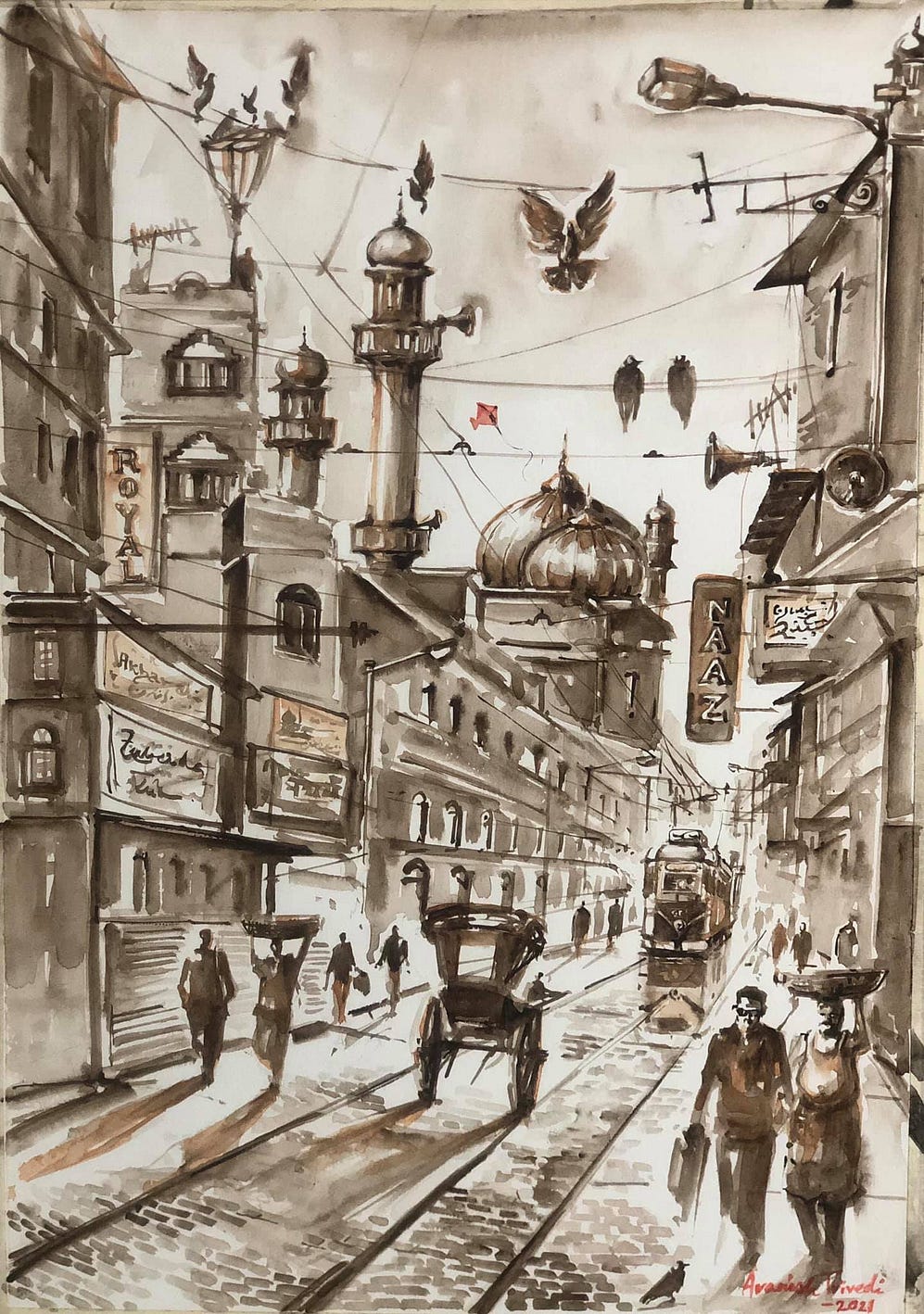
It has not been common to consider this deep encounter between Indic and European cultures that occurred across peninsular India as ‘creolization’. The reasons are bad academic habits. Those who study creolization usually associate the process with a specific kind of encounter- that between Europeans and Africans. Given that there were very few Africans visibly involved in the European expansionism into India, it has been easy to eliminate creolization as an analytical tool with which to study the Indo-European encounter, rather than use the opportunity to rethink the definition of Creolization itself. Relatedly, creolization as a cultural process is commonly associated with islands — archipelagic clusters such as Cape Verde and the Caribbean, and some island-like coastal enclaves of the Americas (the Guyanas, New Orleans): the reason being the historical fact that these were the sites of sugar cane plantations, where African slaves were overwhelmingly bought to. And India is a peninsula. Finally, there is the reason that we have already noted in my discussion of Markovits’s essay: that the historiography of India has been erected on a binary opposition between Indian and British. The consequent inability to imagine histories of interstitial creole groups also inhibits the use of creolization as a way to understand how their culture spread to other groups.
Conversely, what are the historical reasons that might allow us usefully to consider any part of India as ‘Creole’? Here, I will just focus on Bengal to present my case. It is not an island, but its geography supported the creation and sustenance of enclaves that functioned like islands in their ability to compress into a compact space, diverse peoples and their cultural contributions. That creolization occurred in attested by the penetration of numerous Portuguese loan-words into Bangla. This is the first layer of philological evidence for new, unexpected, and lasting cultural products arising from an exchange between population groups. Secondly, culinary influences from the Portuguese entered Bengali cuisine at different levels, also resulting in new cultural products: milk-based sweets and cheese, breaded fried snacks. And the same happened with architecture, as a cursory visit to any of Hooghly’s erstwhile European towns will attest. The subsequent naturalisation of these cultural novelties, and the absence of a visibly different Bengali-Portuguese group, means that this history of creolization has along the way slipped out of our everyday consciousness.
Hier rust Cornelis…
‘Gebooren den Haag- Bengale totscranken’: Born in The Hague, died in Bengal: declares an epitaph in the Dutch Cemetery of Chinsurah. It is commonplace to focus on the emotional attachment generated by blood and birth, while looking for creole worlds. Equally important, but often undervalued, is the connection to a new space created by death and burial. But the cemetery yields even more clues to the routes taken by creolization in Bengal. A supremely important feature of the Dutch settlement of Chinsurah by the mid-17th century, the epitaphs of several tombs here highlight the transoceanic life-arcs of various Dutchmen who crossed the Atlantic and Indian Oceans in the service of the VOC or the Dutch East India Company. ‘Hier rust Cornelis Rietveld’ (here rests Cornelius Rietveld); we read here in another epitaph. We may well be reading it at the Dutch Cemetery in Elmina, Ghana, which was an equally vital node in the VOC’s transoceanic web and whose archives are peppered with many a Cornelius. The epitaphs remind us that Dutch was once spoken along the banks of the Hooghly, connecting Bengal to Batavia where the VOC emerged as the new European guardians of the spice trade. Our ‘Batabi lebu’ attests to that connection, as do the creolized words for three of the four suits of playing cards in Bangla: ruiton, horoton, iskapon from Dutch ruiten, harten, schoppen, which reappear in Bahasa Indonesia as ret, hart, sekopong.
These philological traces unite with the funerary inscriptions in the Cemetery as well as architectural features of a distinct tropical Dutch architecture to reveal ‘little Europe’ on the Ganges as a rich site of creolization. The reappearance of elements of that architectural style, together with words as well as the practices which many of those words designated, at different sites along the Atlantic and Indian Ocean worlds — such as Elmina — point to a transoceanic history of which creole Bengal is a part. Moreover, the fact that Chinsurah, Bandel, Serampore, Chandannagar and other sites, associated today with specific European powers, sit cheek by jowl in the same district of Hooghly, attests to the entangled nature of that history. Creolization in this layered space of politics and power occurred through cross-colonial collaborations that took on increasingly inter-imperial dimensions. It is no coincidence that the Bangla word for Dutch (olondaj) is a loan-word from French (hollandaise), the Bangla word for English (ingrej) is a loan word from Portuguese (inglês), and the word for European in general comes from the Arabic word for the crusaders (frank > firanghi). Creole Bengal was born not just of an encounter between the opposing poles of European and Indian: it was a multi-directional, spiralling, and unpredictable set of consequences with equally unpredictable afterlives.
In the Dutch cemetery, accordingly, were buried various non-Dutch Christians, including William Carey who operated his Baptist mission from neighbouring Danish-run Serampore. There were others whose epitaphs point to lives that moved between rapidly consolidating empires. One Gregorius Herklots, born in Bremen in 1768, died in Chinsurah in 1852 after living there for 63 years, ‘employed in responsible offices by both the Dutch and English governments’. Fiscal of the VOC, he was also the interim governor from 1784–5, and after the British takeover of Chinsurah, he continued in his position of Fiscal under the new government, and became Sudder Ameen of Hooghly in 1832. When he died at the age of 84, he left behind no less than 81 descendants, including his daughter, ‘Bengal gebooren’ Hannah, who authored the 1st Bengali novel Fulmoni o Karunar biboron (1852). A go-between of the kind commonly associated with native informants, Herklots was a man of many languages and talents: ventures he was connected with ranged from translation of Dutch land deeds into Bengali to the reprinting of the Malay Bible, and, moving to an arguably more unstable domain of cultural production: the famous Hooghly Slush.
Saltpetre, Beef and Burgundy
What, indeed, was Hooghly Slush? To satisfy the demands of the heat-sapped Creoles of Bengal, a kind of slush used to be produced by freezing water in shallow earthenware jars or pits. Water was kept at a sufficiently low temperature by the addition of that versatile commodity of empire, saltpetre. It is the same saltpetre that Sir William Jones had eulogised in a letter to his friend Richard Johnson: ‘Why should salt petre remain a mere mortal in this deifying country? If Saint Peter bequeathed the keys of heaven to Roman pontiffs, those keys which unlock the stores of salt petre surely lead to heaven in India.’ Jones was surely aware of the paper, ‘The process of making ice in the East Indies’, published in the 1775 edition of Philosophical Transactions, wherein Sir Robert Barker detailed the utility of saltpetre in this process. As Sir Robert had also commanded the artillery in the Battle of Plassey, he was clearly more than aware of its other use — in the making of gunpowder. This key export of Bengal had yet another use that levers it to the position of quintessential creole commodity: its use in meat preservation. Every Anglo-Indian memsahib worth her salt (no pun intended) knew that to preserve beef in a manner that rendered it appetisingly pink rather than grey, saltpetre was needed; this was the difference between merely salted beef and corned beef.

From the kitchens of Creole Bengal, via Muslim and Mog (Arakanese) khansamas, corned beef entered the repertoire of Calcutta Bengali Muslim families such as mine. It was probably a delicacy that Henry Derozio used to enjoy and that his detractors had in mind when they attacked him in The Calcutta Courier for his saturation of the Bengali Hindu mind with ‘beef and burgundy’. The imbrication of saltpetre, slush, beef, and burgundy brings us back to the moment with which I commenced my exploration of Creole Bengal — the discussion by Claude Markovits and Partha Chatterjee on a possible creole resurgence, at least in the form of a certain strand of utopian political thought, within the writings of Rammohun Roy and Henry Derozio. This is a moment when Creole Bengal has, according to Markovits, closed, leaving behind these imaginings as an intellectual legacy; for Chatterjee, as we noted earlier, these creole imaginings were a continuation of a process that culminated in the cross-community schoolrooms of institutions such as the Durromtollah Academy. Tending to agree with Markovits on the change in the pace and contours of creolization instigated by a watershed that he identifies with Lord Cornwallis’s advent, I go a step further and suggest that what Derozio, at least, was expressing was a memory of once potent Creole Bengal that, in the new century, was being marginalised by the shift of power and culture to Calcutta.
‘Those hands are cold — but if thy notes divine/ May be by mortal wakened once again/ Harp of my country, let me strike the strain!’ That Derozio wrote English poems about a Creole utopia festooned with classical motifs such as harps, wreaths, and minstrels, is for me a sign of his re-creation of a time to which he can trace his genealogical and cultural formation; the laments for a past glory, and exhortations to his countrymen to regain it, strengthen this reading. I do not have time to develop this point in detail, but I wish to point to contrasting literary production in Portuguese India, where sonnets, sestinas and other such ornate poetic forms were written by Indo-Portuguese elite in Konkani, which is elevated by drawing on two classicizing registers, Sanskrit and Latinate Portuguese. A full scoping of Creole India would require such comparisons between trajectories of culture unfurling differently across peninsular India undergoing variegated creolization processes through specific shifting balances of power. Only then can creolization as a historical process that generates culture, and, secondly, as a theory of culture, bring forth a robust alternative understanding of India as formed through the interactions of many empires rather than a tug-of-war of two parties.
Terra Indica (redux)
Nevertheless, in the memorialisation of creole pasts itself lie the possibility of their renewal for contemporary utopian projects. In that sense, creole pasts are never really ‘dead’; they simply assume latent or dormant states from where they can be ‘reactivated’ by diverse practices in the present. Let me conclude by moving to Creole Bengal in the horizon of the present. Creole Bengal was a contact zone par excellence, and it produced complex and rich lifeways. Today, we stand at a historical conjunction marked by a renewed interest in those lifeways, not to create colonial-style museums but to experiment with different ways of revivifying them to make them fit for a range of purposes. I will point out a few such projects that have recently emerged. Through them, we can conceptualise a second order of creolized cultural products, brought forth precisely to memorialise the entangled histories which they are part of.
For instance, the Dutch Cemetery Archive online, conceptualised and executed by Dr Souvik Mukherjee and his students, aims to ‘effect a re-creation and a revival of memory of the colonial settlement as it existed in Chinsurah.’ Such ‘remediation’ has physical, philological and historiographic components: cleaning and piecing together tombstones; reading, transcribing, and translating their inscriptions; and building a bigger picture through cross-checking historical sources. The work is translocal (done in Chinsurah and Kolkata, but involving Dutch archives and funding from the Dutch Embassy). As the Archive’s website states, ‘these projects point at possibilities beyond the traditional Digital Humanities archives to rethink the very notion of archives for the study of colonial history, and arguably, the notion of colonial history itself.’ On the other hand, we have what seem purely tangible efforts — such as the restoration of key edifices in the Hooghly towns: funded by the Danish and French governments, such efforts have either been undertaken recently or are soon to commence in Serampore and Chandannagar respectively. Finally, there are small-scale commercial enterprises such as ‘Terra Indica’, a furniture restoration enterprise based in Kolkata that draws on both local and foreign expertise and demand.
Run by one of those intrepid French who come to India to work with aspects of our culture that we forget about or simply don’t see any more, Terra Indica employs a team of local youth who have been saved from lives of tedium and poverty by being trained in various arts of ‘karigari’ or artisanship associated with the maintenance of furniture created through the creole encounter in Bengal. Not many can afford to buy these pieces of furniture but Terra Indica engages in these other ways with a democratisation of memory through activating a taste for the past. What it has in common with the restoration ventures funded by different European governments is a conversation between heritage (both tangible and intangible) and the market to flourish and become more than a reified, cobweb-clad showcase of the past — through the production of objects for the market or to consolidate market-driven tourism.
I call this kind of intervention ‘sustainable nostalgia’. They demonstrate a sympathetic, pragmatic yet romantic investment with the Creole past viewed as shared heritage, whereby ways of apprehending the environment through beautiful objects or edifices, which encode in their form a history of cultural exchange, are not lost. Following Markovits, therefore, and picking up on this emergence of a sustainable nostalgia, I insist that the study of creole pasts is ‘more than an antiquarian pastime’. It is a political repudiation of territorialist and nativist impulses of history writing, a vital way of reminding ourselves of the way we were, and the way we must still continue to be, as people of the terra indica and the terra de bengala.
Ananya Jahanara Kabir is Professor of English Literature at King’s College London. She researches the intersection of the written text with other forms of cultural expression within acts of collective memorialization and forgetting.
photo : I thank the artist Avanish Trivedi for permitting us to use his artwork for this essay.
- Se connecter ou s'inscrire pour publier un commentaire
- 92 vues
Connexion utilisateur
Dans la même rubrique
Mustafa Benfodil ("El Watan.dz")
14/12/2025 - 10:42
Yves Tusseau
04/12/2025 - 11:09
Julien Steinhauser
02/12/2025 - 19:47
Commentaires récents
Didier Laguerre (PPM) lance sa campagne électorale
gag
abcx
23/12/2025 - 19:02
La honteuse effigie avait été accrochée pendant toute la campagne électorale au 2ème étage d'un i Lire la suite
Didier Laguerre (PPM) lance sa campagne électorale
Wi, Véyative, j’ai entendu ça...
Frédéric C.
23/12/2025 - 16:20
...quelque part! Lire la suite
Didier Laguerre (PPM) lance sa campagne électorale
C'est qui le "R" ?
Albè
23/12/2025 - 10:13
La Racaille, le Raté, le Rastaquouère, le Repris de justice, le Revanchard ?
Lire la suiteDidier Laguerre (PPM) lance sa campagne électorale
Ce n'est pas Cesaire
Veyative
23/12/2025 - 08:20
qui a la paternité du "King Kong". Lire la suite
Didier Laguerre (PPM) lance sa campagne électorale
ABCX....
Frédéric C.
22/12/2025 - 15:33
...je suis certes loin, du moins pour l’instant, mais j’essaye de suivre du plus près possible. Lire la suite
Top 5 des articles
Aujourd'hui :
- La Guadeloupe et Martinique dans le top 10 mondial des ventes de voitures neuves
- Didier Laguerre (PPM) lance sa campagne électorale
- Ce roman français rocambolesque d’une autrice réunionnaise vient d’être élu parmi les meilleurs livres 2025 du New York Times (c’est une première historique !)
- Terrorisme étasunien en mer des Caraïbes
- « Man sé an négrès Ibo » : subversion coloniale et affirmation identitaire.
Depuis toujours :
- Tous les présidents et premiers ministres de la Caraïbe sont vaccinés
- L'intolérable appauvrissement intellectuel et culturel de la Guadeloupe et dans une moindre mesure de la Martinique !
- LETTRE OUVERTE AU 31ème PREFET FRANCAIS DE MARTINIQUE
- L'arrière-grand-père maternel de Joan Bardella était...algérien
- Les triplement vaccinés contre le covid ne bandent plus

